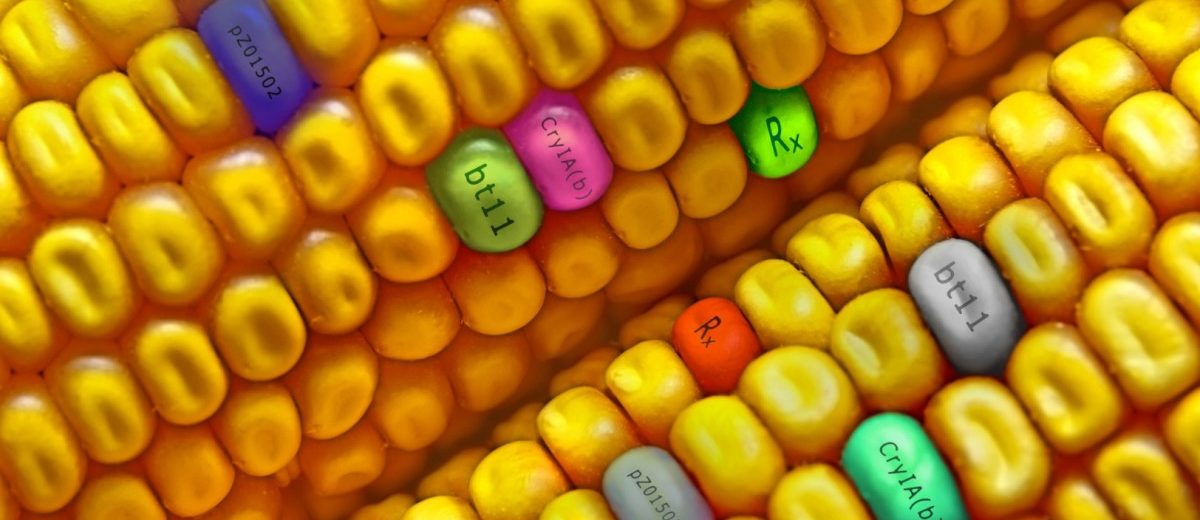by Anna Lappé, Earth Island Journal
When my father, Marc Lappé, died in 2005 at the age of 62 from glioblastoma, he left behind a wife, five children, two stepchildren, and an unfinished manuscript. In the wake of his death, while struggling to make sense of a world without him, I holed up in a writers’ retreat on the rocky coastline of Provincetown, Massachusetts to see if I could transform his rough ideas into something presentable — and publish what would have been his 15th book.
The Pacific Declaration was fundamentally a call to apply the precautionary principle to genetic engineering. (Pictured: CRISPR gene-edited mushrooms). Photo by Penn State / Flickr.
I never succeeded. But the central idea of his book has stayed with me all these years. Drafted at the dawn of the age of genetic engineering — long before the development of CRISPR technologies and new ways to alter life as we know it — the book’s message was simple: We’ve developed frameworks within and across nation states for protecting environmental integrity for future generations (think the US Endangered Species Act). Now, as we attempt to alter the genetic makeup of living beings, we need new strategies and frameworks for protecting the planet’s genetic integrity for future generations. He was writing as a scientist, an ethicist — and a parent.
I have been reflecting on his insight from so many years ago on the 20th anniversary of “The Pacific Declaration,” a statement of the ethical principles for this era of genetic engineering that my father and two dozen scientists, ethicists, and authors crafted on another rocky coastline in Bolinas, California and published in October 1999.
The Declaration states: “In recognition of the fundamental importance of our planet’s natural genetic heritage and diversity, and in acknowledgment of the power of genetic engineering to transform this heritage, [we] believe that the proponents and practitioners of genetic technologies must adhere to the principles of prudence, transparency, and accountability.”
The document was fundamentally a call to apply the precautionary principle to our collective approach to genetic engineering. The authors noted that the burden of proof must be on those promoting genetic engineering to show that these technologies “contribute to the general welfare of consumers, farmers, and society.” And that they do so, importantly, “without compromising the viability of traditional agricultural practices, including organic farming.”
The Declaration was also a call to bring democratic deliberation to decisions about regulation and research priorities: “In democratic societies, any decision to deploy powerful new technologies must be made with full public participation and accountability,” the Declaration states. And it was a demand for “food sovereignty,” the concept developed in the 1990s by the global peasant movement, La Via Campesina, that calls for farmer and community power over what food is grown, where, and how.
The month after my father and others gathered to write this Declaration, I found myself getting tear gassed in the streets of Seattle. At the time, I was a graduate student at Columbia University, studying trade policy and globalization. Participating in the global action against the World Trade Organization — the so-called “Battle of Seattle” — felt like an appropriate extracurricular activity.
The Seattle action was also intimately tied to the work of my father and his colleagues. For the massive demonstrations in November 1999 against the new global trade regime were also about the future of food and how genetic engineering would affect farmers and eaters all around the world. In the streets, I heard as much from the Teamsters and environmentalists as I heard from Mexican farmers calling for protections of their corn markets in the face of American genetically engineered corn imports.
Since the Pacific Declaration was penned in 1999, commodity agriculture in the US has been remade by genetic engineering. The majority of US corn and soy grown today has been genetically engineered — most of it to be resistant to the toxic herbicide Roundup. And the impacts of genetic engineering can now be felt in communities around the world burdened with exposure to toxic pesticides used in concert with these crops, including the tens of thousands suffering from cancers thought to be linked to the weedkiller Roundup — with lawsuits pending against its producer, Bayer (which bought Monsanto in 2018). Today, despite the urging of scientists like those who penned the Pacific Declaration, there are no precautionary principles in the US regulatory system for these technologies.
When my dad and his colleagues wrote the Pacific Declaration, it was a call for all of us to ask big questions of this new genetic age: Who benefits? Who is harmed? How do these decisions affect future generations? Twenty years later, these questions are just as pressing.



